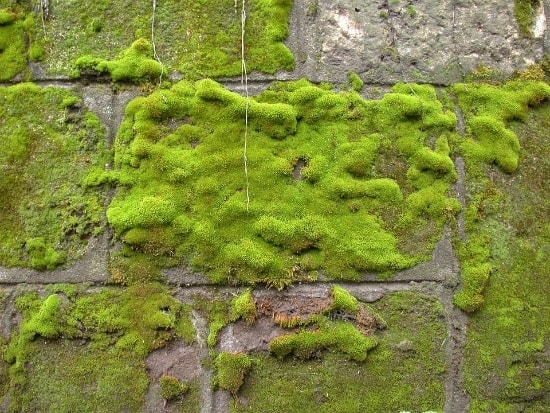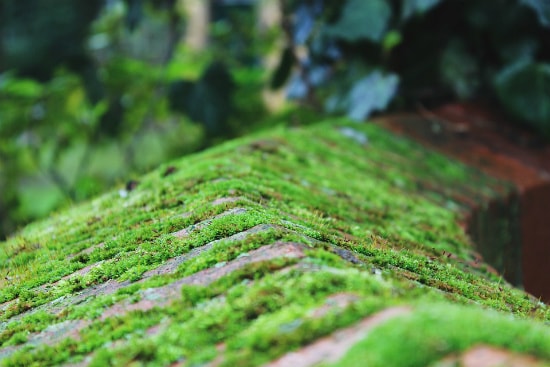
Moss graffiti, also called eco graffiti, living, green or eco-friendly graffiti is a new take on guerilla gardening, which utilises living plants to convey messages in the form of words, pictures, and other shapes. This is the latest hype in urban landscapes, adorning walls along streets and private and public buildings. Moss graffiti adds a needed touch of green to urban landscapes and is a much more environmentally sound artistic expression than spray paint graffiti.
Table of Contents
What is moss graffiti?
Gone are the days when graffiti was considered a mere act of vandalism or an “eyesore.” Street art has established itself as a legitimate form of art, which has received the nod of the art community and is welcomed to bring colour to dull cityscapes. And it now has a green touch to it as well in the form of moss graffiti.
Green and ecological artwork, such as moss graffiti, conveys messages and triggers emotional reactions in the same way as traditional spray paint street art, but does so without harming the buildings in any way.
Benefits of moss graffiti
Moss graffiti offers several benefits that make it an attractive option for artists, environmentalists, and urban dwellers. Here are some of the advantages of moss graffiti:
- Eco-friendly: Moss graffiti is a sustainable and eco-friendly alternative to traditional graffiti methods that use toxic chemicals and paints. It promotes greenery and helps to purify the air in urban areas.
- Low maintenance: Moss graffiti requires minimal maintenance, as it can thrive in a variety of environments with minimal care. This makes it an ideal option for busy artists or those who want to create art without the hassle of upkeep.
- Unique and creative: Moss graffiti offers a unique and creative way to express oneself, allowing artists to experiment with different designs, patterns, and textures.
- Community engagement: Moss graffiti can be a community-driven project, encouraging people to come together and create art that promotes environmental awareness and sustainability.
- Aesthetic appeal: Moss graffiti can add a touch of natural beauty to urban spaces, making them more visually appealing and inviting.
How to make your own moss graffiti

Choose the right spot for your moss graffiti
You will need to find a spot that is not exposed to direct sunlight. In all technicality, moss is a plant, which means it will need some supply of sunlight. If you decide to grow it on an internal wall that is not supplied with natural light, you will need a couple of light bulbs to simulate the effect of sunlight.
Don’t confuse the moss graffiti with the moss tiles you can buy – they are made of lichens, not moss, and do not require sunlight or fertilising.
If you’re taking your moss graffiti outdoors, choose a place that is not basking in the sunshine all day long to sync better with the natural habitat of moss – you know it thrives best in shady moist places where hardly any other plant will propagate.
Typically, a north-facing wall will do best. The material on which you will display your moss graffiti project has to be porous to allow the moss to establish itself, even if it doesn’t develop a root system. We do not recommend brick walls as they need to be as least exposed to moisture as possible, and the watering you will have to do as part of the moss graffiti maintenance will affect them badly.
Prepare moss paint
To stir up your own moss mixtures, you will need:
- 3 cups of clean moss;
- 2 cups plain yoghurt or buttermilk;
- 2 cups water (or beer);
- 1-2 tsp of sugar;
- optional: a dollop of corn syrup.
You can either collect the moss from your garden or any other place you can find, or buy some. Wash as much soil and plant matter off the moss as possible and place the broken clumps in a blender (preferably, an old one).
Then add the sugar and the buttermilk or yoghurt. Blend to a thick consistency. Add some water if it gets too sticky. You can replace the sugar with a water-retention gel, which you can find in gardening stores, to give the mixture a thick, gel-like consistency, making it easy to apply and helping the moss graffiti stick to wood and brick. Pour the mixture into a container with a lid.
Paint the moss graffiti

The moss mixture can be spread in any possible pattern you wish to express your artistic vision. You can either freehand some words or shapes or, if you’re not feeling confident enough in your artistic skill, use a stencil. This is art freehand, not a put-together recycled DIY. It has to be neat, easy to read, and visually pleasing. Think about it as a gallery piece.
Once you have your stencil or freehand chalked, strap on your apron, don a scarf or a barrette, take a few steps back, do that proportion-measuring thing with your hands in a rectangle form, or hold your brush, squinting, acting like you got this.
Or, just grab a paintbrush and spread the moss mixture to fill the chalk outline. Ensure the mixture has a paint-like texture, smooth and not too runny or thick, for the best application. Like an oversized colouring book! If you have some mixture left, store it in the fridge for reapplying.
Alternatively, you can try reverse graffiti – let the moss establish over the entire wall and use a dull knife or jet wash to carve the graffiti out of it.
Common mistakes to avoid
While moss graffiti can be a fun and creative activity, there are some common mistakes to avoid to ensure that your artwork thrives. Here are some tips to keep in mind:
- Using the wrong type of moss: Not all types of moss are suitable for graffiti. Make sure to choose a type of moss that is adapted to the environment and surface you are working with.
- Not preparing the surface properly: Failing to clean and prepare the surface properly can lead to poor adhesion and a shorter lifespan for your moss graffiti.
- Using too much or too little moss paint: Using too much moss paint can lead to a thick, uneven application, while using too little may result in a sparse, patchy design.
- Not providing enough moisture: Moss graffiti needs regular watering to thrive. Make sure to mist your artwork regularly, especially in dry environments.
- Not using a suitable binding agent: Using a binding agent like corn syrup or water-retention gel can help to keep your moss paint in place and promote healthy growth.
Moss graffiti maintenance
Apply new layers of the moss mixture every second day and on an alternative day, spray the area with water. Keep in mind that, as with any other living plant, moss graffiti can be a hit or miss, depending on the climate of your area and weather conditions.
Usually, the most appropriate time to put up moss graffiti would be spring or autumn, when the air is moist enough to reduce misting or applying a new coat of moss paint once a week. Adding more moss paint can help encourage growth and keep the design vibrant, especially in dry climates. Make sure the moss graffiti stays moist so it can get established, grow, and thrive.
Removing moss graffiti
Hard to believe anyone could be bored with the refreshing appeal of green graffiti, but if for any reason you decide to remove a moss graffiti piece, spray the entire surface with lime juice. Unlike traditional graffiti removal methods that often involve harsh chemicals and other such toxic chemicals, lime juice will remove the moss completely from any type of growing surface you’ve used.
Need a gardener?
Enter your postcode to view our rates and availability in your area.
For questions about the services we offer visit our main site



